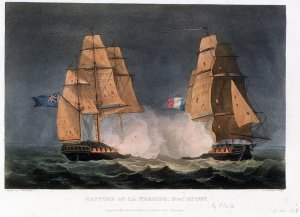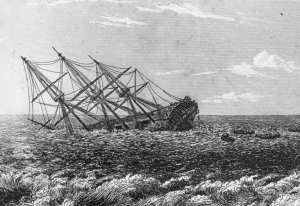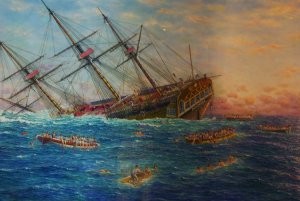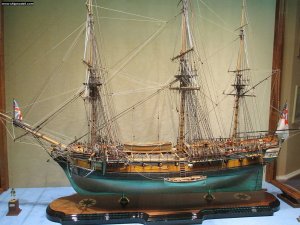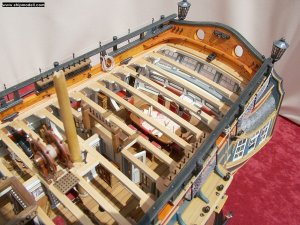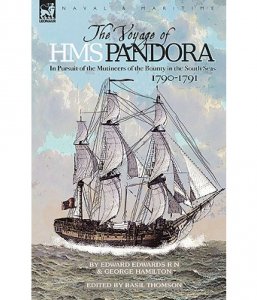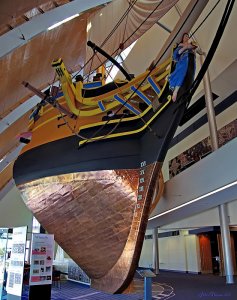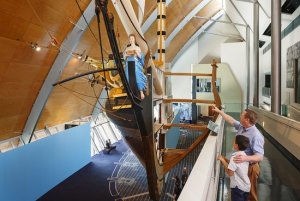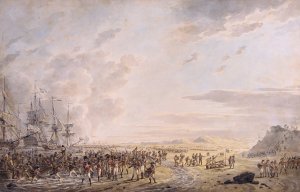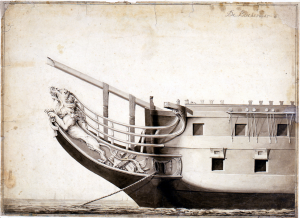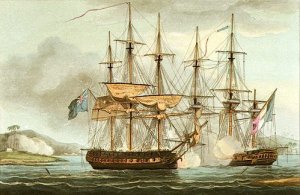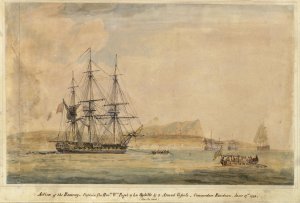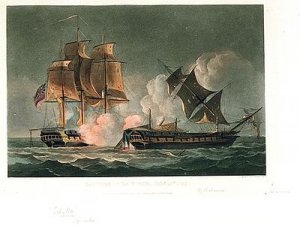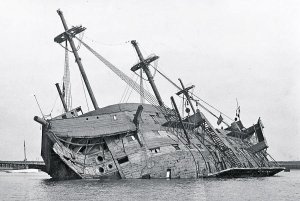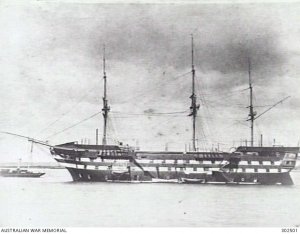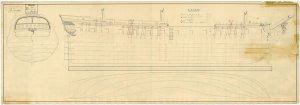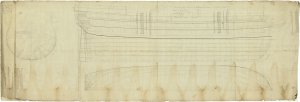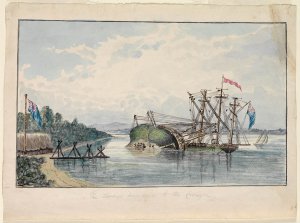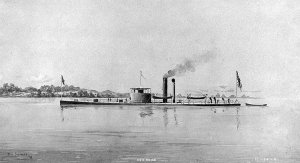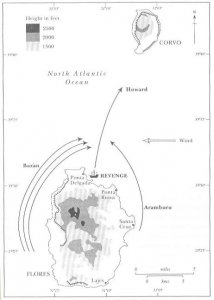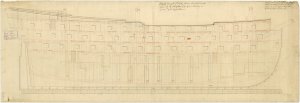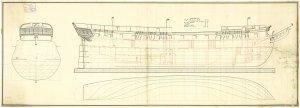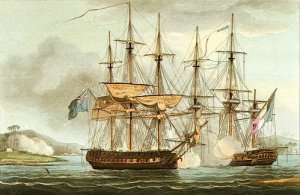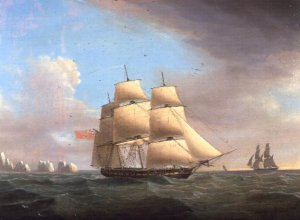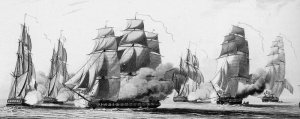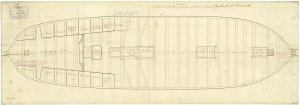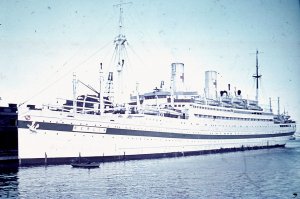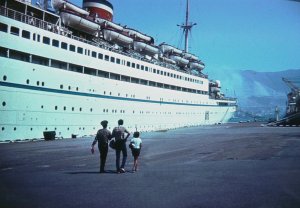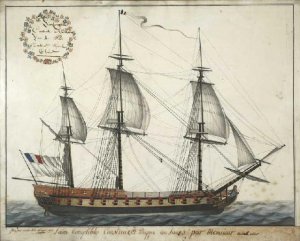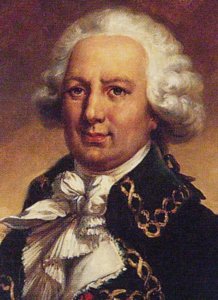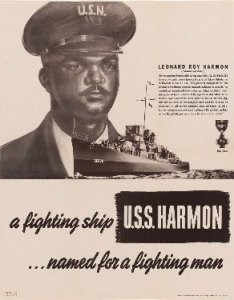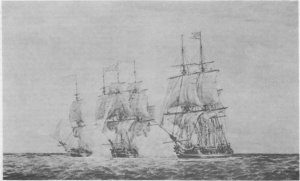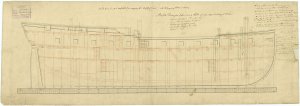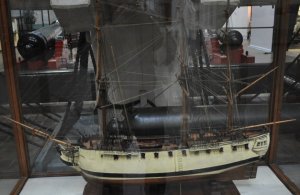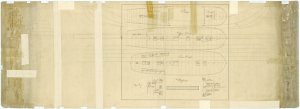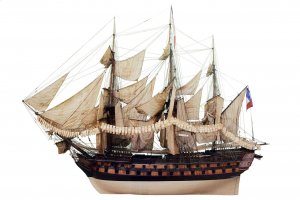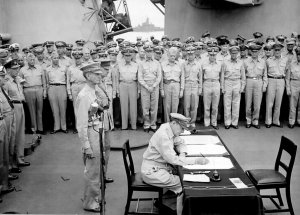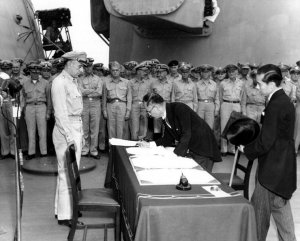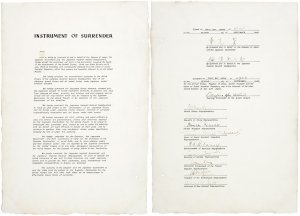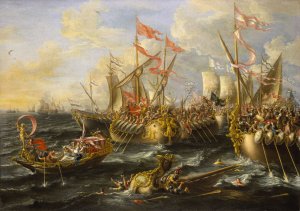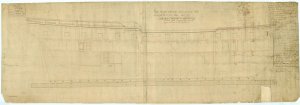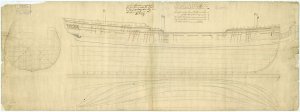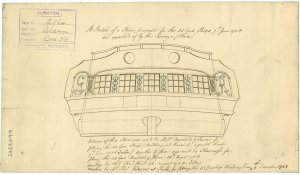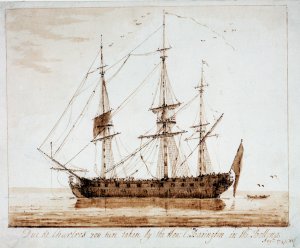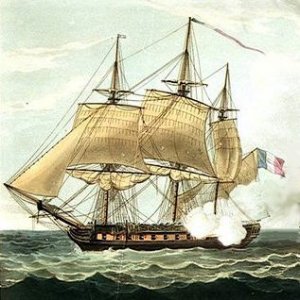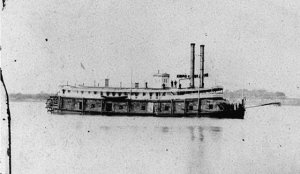Today in Naval History - Naval / Maritime Events in History
Events on 1 September
1557 – Death of Jacques Cartier, French navigator and explorer (b. 1491)
Jacques Cartier (December 31, 1491 – September 1, 1557) was a
Breton explorer who claimed what is now Canada for France. Jacques Cartier was the first European to describe and map the Gulf of Saint Lawrence and the shores of the Saint Lawrence River, which he named "The Country of Canadas", after the Iroquois names for the two big settlements he saw at Stadacona (Quebec City) and at Hochelaga (Montreal Island)
 https://en.wikipedia.org/wiki/Jacques_Cartier
1599 – Death of Cornelis de Houtman, Dutch explorer
https://en.wikipedia.org/wiki/Jacques_Cartier
1599 – Death of Cornelis de Houtman, Dutch explorer (b.1565)
Cornelis de Houtman (2 April 1565 – 1 September 1599), brother of Frederick de Houtman, was a Dutch explorer who discovered a new sea route from Europeto
Indonesia and who thus begun the Dutch
spice trade. At the time, the Portuguese Empire held a monopoly on the spice trade, and the voyage was a symbolic victory for the Dutch, even though the voyage itself was a disaster. Houtman was also a spy, having worked against the Portuguese by bringing back to the Netherlands privileged nautical information obtained during his stay in Portugal.

Arrival of the De Houtman on the beach of Banten
https://en.wikipedia.org/wiki/Cornelis_de_Houtman
1747 - HMS Hind (14) foundered in North America.
1748 - HMS Serpent bomb (12) wrecked
1752 – Launch of French Heros, a 74 gun ship
The
Héros ("hero") was a 74-gun ship of the line of the French Navy, built by Joseph Chapelle at Brest and launched in 1752
In 1755, the
Héros, under captain de Kermabon, took part in the Canadian campaign in the Bullion de Montlouet squadron.
She was wrecked off le Croisic and scuttled at the Battle of Quiberon Bay, the 21 September 1759.
 The French Soleil Royal and Héros are in flames on the right, in the foreground HMS Resolution lies wrecked on her starboard side. In front of her is HMS Essex, with other members of the British fleet at anchor in the background. The captured French Formidable is attended by a British frigate on the left of the picture.
https://en.wikipedia.org/wiki/French_ship_Héros_(1752)
The French Soleil Royal and Héros are in flames on the right, in the foreground HMS Resolution lies wrecked on her starboard side. In front of her is HMS Essex, with other members of the British fleet at anchor in the background. The captured French Formidable is attended by a British frigate on the left of the picture.
https://en.wikipedia.org/wiki/French_ship_Héros_(1752)
sister
https://en.wikipedia.org/wiki/French_ship_Palmier_(1752)
1762 - HMS Lyon (60), Cptn. Le Cross,
captured French frigate Zephyre (26).
1777 – Launch of French 32 gun Sibylle, a Sibylle-class frigate
The
Sibylle class was a class of five 32-gun sail frigates designed by Jacques-Noël Sané and built for the French Navy in the late 1770s. They carried 26 x 12-pounder guns on the upper deck and 6 x 8-pounder guns on the forecastle and quarter deck.

start of the action between
HMS Magicienne and
La Sibylle, 2 January 1783.
https://en.wikipedia.org/wiki/Sibylle-class_frigate
1784 – Launch of HMS Hussar, a 28 gun Enterprise frigate
HMS Hussar was a 28-gun
Enterprise-class
sixth-rate frigate of the Royal Navy.
Hussar was first commissioned in May 1790 under the command of Captain Eliab Harvey.
Career
On 2 May 1795 Rear Admiral George Murray sent Captain Alexander Cochrane in
Thetis, together with
Hussar, to intercept three French supply ships reported at
Hampton Roads. At daybreak on 17 May the British came upon five ships 20 leagues West by South from Cape Henry. The French made a line of battle to receive the British frigates. An action commenced, with three of the French vessels eventually striking their colours.
Thetis took possession of the largest, which turned out to be
Prévoyante, pierced for 36 guns but only mounting 24.
Hussar captured a second,
Raison, pierced for 24 guns but only mounting 18. One of the vessels that had struck nonetheless sailed off. Two of the five had broken off the fight and sailed off earlier. (The three that escaped were
Normand,
Trajan, and
Hernoux.) An hour after she had struck,
Prévoyante's main and foremasts fell over the side. In the battle,
Thetis had lost eight men killed and 9 wounded;
Hussar had only two men wounded.

Four of the French ships had escaped from Guadeloupe on 25 April. They had sailed to American ports to gather provisions and naval stores to bring back to France. Cochrane had intended to leave the prizes in charge of the cutter
Prince Edward after repairing the damage to his vessel during the night. However, a breeze picked up and by morning the escaping French vessels were out of sight. The British sailed with their prizes to Halifax. The British took
Prévoyante into the Royal Navy as HMS
Prevoyante.
On 20 July,
Hussar was in company with
Thetis and HMS
Esperance when they intercepted the American vessel
Cincinnatus, of Wilmington, sailing from Ireland to Wilmington. They
pressed many men on board, narrowly exempting the Irish revolutionary
Wolfe Tone, who was going to Philadelphia.
https://en.wikipedia.org/wiki/HMS_Hussar_(1784)
https://en.wikipedia.org/wiki/Enterprise-class_frigate
1800 - During the Quasi-War with France, the schooner, USS Experiment, commanded by Lt. Charles Stewart, captures the French privateer Deux Amix off Barbuda, West Indies.
USS Experiment was a schooner in the
United States Navy during the Quasi-War with France.
Experiment was built in 1799 at Baltimore, Maryland; and first put to sea late in November 1799, Lieutenant W. Maley in command.
Experiment joined the squadron commanded by Captain Silas Talbot on the Santo Domingo station, and for seven months, cruised against French
privateers in the
Caribbean, taking a number of valuable prizes. On 1 January 1800, while becalmed in the Bight of Leogane with a convoy of four merchantmen,
Experiment was attacked by 11 armed pirate boats, manned by about four or five hundred buccaneers. In the seven hours of fighting that followed, the pirates boarded one of the merchantmen, killing her captain, and towed off two other ships of the convoy after their crews had abandoned them. But
Experiment sank two of the attacking craft, and killed and wounded many of the pirates, suffering only one man wounded.

A depiction of Experiments fight with Picaroons in the Action of 1 January 1800.
Arriving in the Delaware River early in July 1800,
Experiment refitted, and returned to the
West Indies. Again successful in her patrols against the French, she captured several armed vessels, one of which was carrying a high-ranking army officer. She also recaptured a number of American merchantmen, and in January 1801 rescued 65 Spaniards from the ship
Eliza, wrecked on a reef of the island of Saona.
Experiment returned to Norfolk early in February 1801, and was laid up there until August, when she sailed to Baltimore. There, she was sold in October 1801.
https://en.wikipedia.org/wiki/USS_Experiment_(1799)
1801 - french Cocarde-class 40 gun Bravoure wrecked 1 September 1801 near Livorno to avoid capture by the British Navy.
Cocarde Nationale class, (40-gun design by Pierre Duhamel, with 28 x 12-pounder and 12 x 6-pounder guns).
The
Bravoure ("Bravery") was a 40-gun
Cocarde class frigate of the
French Navy.
She was launched in November 1795 in Saint Servan. She took part in the Expédition d'Irlande, and later served in Ganteaume's squadron. On 28 January 1801, she fought an indecisive battle against HMS
Concorde. In June of the same year, under commander Dordelin, she ferried artillery pieces from Toulon to Elba with
Succès; on the way back, she encountered HMS
Concorde again, but this time accompanied by two other frigates. She beached herself to avoid capture and became a total loss.
https://en.wikipedia.org/wiki/French_frigate_Bravoure_(1795)
https://en.wikipedia.org/wiki/Cocarde-class_frigate
1812 - Boats of HMS Bacchante (38), Cptn. William Hoste,
captured French national xebec Tisiphone (3), two gunboats and seven vessels from a convoy, at Port Lemo, Adriatic.
1814 - The sloop-of-war, USS Wasp, commanded by Johnston Blakely, sinks the British brig sloop, HMS Avon, south of Ireland.
The
Sinking of HMS Avon was a
single ship action fought during the
War of 1812, and took place on 1 September 1814. In the battle, the ship-rigged
sloop of war USS Wasp forced the
Cruizer-class brig-sloop HMS
Avon to surrender. The Americans could not take possession of the prize as other British brig-sloops appeared and prepared to engage.
Avon sank shortly after the battle.
Prelude
The heavy sloop of war USS
Wasp had spent seven weeks in Lorient in France, making repairs after an earlier hard-fought action against HMS
Reindeer, and replacing casualties from the crews of American privateers in the port.
Wasp sortied on 27 August, and almost immediately was involved in action. Early on 1 September, a convoy of ten merchant ships escorted by the ship of the line HMS
Armada was encountered.
Wasp made repeated attacks and succeeded in capturing one ship loaded with iron, brass and arms.
Later that day, as night was falling, Master Commandant
Johnston Blakely, commanding
Wasp, spotted four other unknown sail, and made for the nearest.

Engraving of the battle by Abel Bowen
Battle
The unknown vessel was the
Cruizer-class brig-sloop HMS
Avon, mounting sixteen 32-pounder carronades and two 6-pounder long guns.
Wasp carried twenty-two 32-pounder carronades, two 12-pounder chase guns and a 12-pounder boat carronade removed from
Reindeer.
As
Wasp approached
Avon's quarter, the two vessels exchanged several hails, in which the Americans demanded that the British vessel
heave to, and shots from the bow and stern chase guns. Blakely eventually drew up alongside
Avon, deliberately selecting the leeward position to prevent
Avon escaping downwind.
It was fully dark by this time, the wind was fresh and the sea was fairly rough. Nevertheless, the American gunners were very accurate. After half an hour,
Avon had been partly dismasted, one third of her crew were casualties and her guns had been silenced, many of the broadside carronades being dismounted. By contrast, although the battle took place at such short range that one American sailor was struck by wadding from a British carronade, only four shot struck the hull of
Wasp and only three American sailors were wounded.
Three quarters of an hour after the start of the battle,
Avon surrendered. While the crew of
Wasp were lowering a boat to take possession, another unknown vessel was seen approaching, followed by two more.
Wasp made away downwind while the braces which had been shot away were replaced. The nearest pursuer was the British brig-sloop HMS
Castilian. The brig got close enough to fire an inaccurate broadside over
Wasp's quarter, but
Avon had been making repeated distress signals, and
Castilian broke off to help.
Avon's crew was taken off, and the shattered brig sank soon afterwards.
https://en.wikipedia.org/wiki/Sinking_of_HMS_Avon
1854 - Siege of Petropavlovsk
The Siege of Petropavlovsk was a military operation in the Pacific Theatre of the Crimean War. The Russian casualties are estimated at 115 soldiers and sailors killed and seriously wounded, whilst the British suffered 105 casualties and the French 104.
http://en.wikipedia.org/wiki/Siege_of_Petropavlovsk
1911 – The armored cruiser Georgios Averof is commissioned into the Greek Navy. It now serves as a museum ship.
Georgios Averof is a modified
Pisa-class armored cruiser built in Italy for the Royal Hellenic Navy in the first decade of the 20th century. The ship served as the Greek flagship during most of the first half of the century. Although popularly known as a battleship in Greek, she is in fact an armored cruiser (θωρακισμένο καταδρομικό), the only ship of this type still in existence.

The ship was initially ordered by the Italian Regia Marina, but budgetary constraints led Italy to offer it for sale to international customers. With the bequest of the wealthy benefactor George Averoff as down payment, Greece acquired the ship in 1909. Launched in 1910,
Averof arrived in Greece in September 1911. The most modern warship in the Aegean at the time, she served as the flagship of admiral Pavlos Kountouriotis in the First Balkan War, and played a major role in the establishment of Greek predominance over the Ottoman Navy and the incorporation of many Aegean islands to Greece.
The ship continued to serve in World War I, the Greco-Turkish War of 1919–1922, and the interwar period, receiving a modernization in France in 1925 to 1927. Following the
German invasion of Greece in April 1941,
Averof participated in the exodus of the Greek fleet to Egypt. Hopelessly obsolete and prone to mechanical breakdowns, she nevertheless spent the next three years as a convoy escort and guard ship in the Indian Oceanand at the Suez Canal. In October 1944, she carried the
Greek government in exile back to liberated Athens, after the withdrawal of the German army.
In 1952, she was decommissioned, before being moved to Poros, where she was berthed from 1956 to 1983. From 1984 until today, she has been reinstated on active duty as museum ship in the Naval Tradition Park in Faliro. After maintenance in late 2017, she achieved seaworthiness state once again, allowing the ship to sail (towed) accompanied by Greek frigate
Kountouriotis (F-462) (Φ/Γ Κουντουριώτης) to Thessaloniki Greece where she received more than 130,000 visitors over her 53-day stay.
https://en.wikipedia.org/wiki/Greek_cruiser_Georgios_Averof
1925 - Cmdr. John Rodgers and a crew of four in a PN-9 aircraft run out of fuel on the first San Francisco to Hawaii flight. Landing at sea, they rig a sail and set sail for Hawaii. On Sept. 10, they are rescued by the submarine USS R-4, 10 miles from Kaui, then Territory of Hawaii.
https://en.wikipedia.org/wiki/Naval_Aircraft_Factory_PN
1932 - HMNZS Achilles launched
HMNZS Achilles was a Leander-class light cruiser which served with the Royal New Zealand Navy in the Second World War, the second of five in the class. Originally constructed by the Royal Navy, she was loaned to New Zealand in 1936 before formally joining the new Royal New Zealand Navy in 1941. She became famous for her part in the Battle of the River Plate, alongside HMS Ajax and HMS Exeter and notable for being the first Royal Navy cruiser to have fire control radar, with the installation of the New Zealand-made SS1 fire-control radar in June 1940.

After Second World War service in the Atlantic and Pacific, she was returned to the Royal Navy. She was sold to the Indian Navy in 1948 and recommissioned as INS Delhi. She was scrapped in 1978.
https://en.wikipedia.org/wiki/HMNZS_Achilles_(70)
1939 Battle of the Danzig Bay
The Battle of Danzig Bay (Polish:
bitwa w Zatoce Gdańskiej) took place on 1 September 1939, at the beginning of the
invasion of Poland, when
Polish Navy warships were attacked by German
Luftwaffe aircraft in Gdańsk Bay (then Danzig Bay). It was the first naval-air battle of World War II.
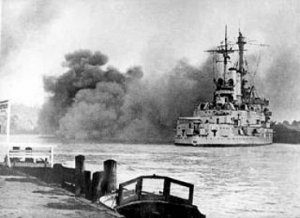 Schleswig Holstein feuert auf die Westerplatte(Foto vom 1. September 1939)
http://en.wikipedia.org/wiki/Battle_of_the_Danzig_Bay
https://de.wikipedia.org/wiki/Kampf_um_die_Westerplatte
1952 – The Old Man and the Sea, the Pulitzer Prize-winning novel by Ernest Hemingway, is first published.
The Old Man and the Sea
Schleswig Holstein feuert auf die Westerplatte(Foto vom 1. September 1939)
http://en.wikipedia.org/wiki/Battle_of_the_Danzig_Bay
https://de.wikipedia.org/wiki/Kampf_um_die_Westerplatte
1952 – The Old Man and the Sea, the Pulitzer Prize-winning novel by Ernest Hemingway, is first published.
The Old Man and the Sea is a short novel written by the American author Ernest Hemingway in 1951 in
Cuba, and published in 1952. It was the last major work of fiction by Hemingway that was published during his lifetime. One of his most famous works, it tells the story of Santiago, an aging
Cuban fisherman who struggles with a giant marlin far out in the Gulf Stream off the coast of Cuba.

In 1953,
The Old Man and the Sea was awarded the Pulitzer Prize for Fiction, and it was cited by the Nobel Committee as contributing to their awarding of the Nobel Prize in Literature to Hemingway in 1954.
https://en.wikipedia.org/wiki/The_Old_Man_and_the_Sea
1985 – A joint American–French expedition locates the wreckage of the RMS Titanic.
The
wreck of the RMS Titanic lies at a depth of about 12,500 feet (3.8 km; 2.37 mi), about 370 miles (600 km) south-southeast off the coast of
Newfoundland. It lies in two main pieces about a third of a mile (600 m) apart. The bow is still largely recognizable with many preserved interiors, despite its deterioration and the damage it sustained hitting the sea floor. In contrast, the
stern is completely ruined. A debris field around the wreck contains hundreds of thousands of items spilled from the ship as she sank. The bodies of the passengers and crew would have also been distributed across the sea bed, but have been consumed by other organisms.

The bow of the wrecked RMS
Titanic, photographed in June 2004
https://en.wikipedia.org/wiki/RMS_Titanic
https://en.wikipedia.org/wiki/Wreck_of_the_RMS_Titanic

